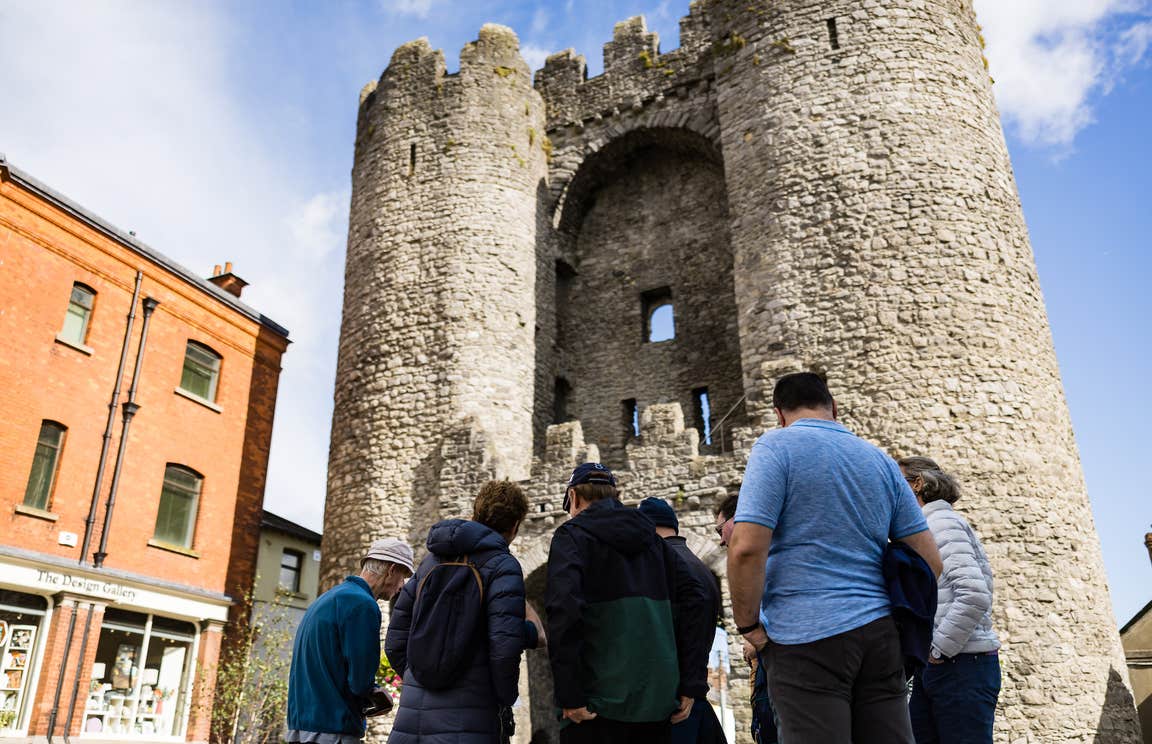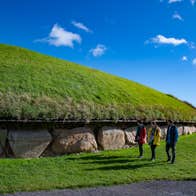Photo credit: @live.adventure.travel
Get a sense of Drogheda’s history
If you’re arriving into Drogheda by Iarnród Éireann (Irish Rail), then Millmount Museum is a great place to start your day – it’s about a 15-minute walk from the station. You can’t miss it, either – the old Martello tower stands atop a huge 3000-year-old mound, which is believed to hold the burial remains of the warrior poet Amergin.
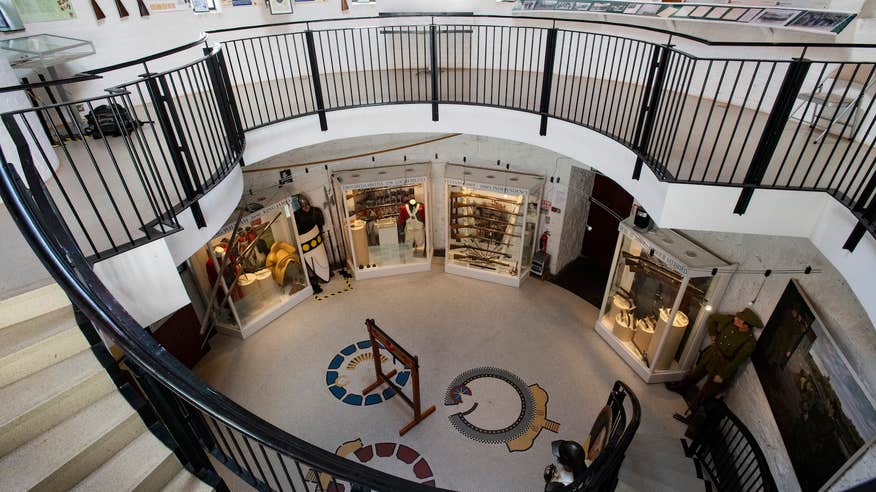
The museum is divided in two sections. The old Governor’s House (where you buy your ticket for the guided tour) makes up the bulk of the collection, which is pretty broad in range. It includes Ireland’s last surviving 18th century guild and trade banners as well as one of the country’s first vacuum cleaners. In the basement you’ll find vintage telephones, retro call cards and a morse code machine, which you can have a bash at using yourself. If you’re over the age of 35, prepare yourself for the sight of an old Nokia mobile phone, which is on display as a historical artefact.
The Martello tower is home to a military museum with a wealth of paraphernalia, like matchlock muskets (used in the Siege of Drogheda) and bayonets (circa the Battle of the Boyne). There are also military uniforms from various eras, and in-depth timelines about the Easter Rising and the Cromwellian invasions, told from a local perspective. There’s even a scale model of the Battle of Waterloo, which might seem an unusual inclusion until you learn that the Duke of Wellington was born in Ireland (in what is now the Merrion Hotel) and his family has roots in Drogheda.
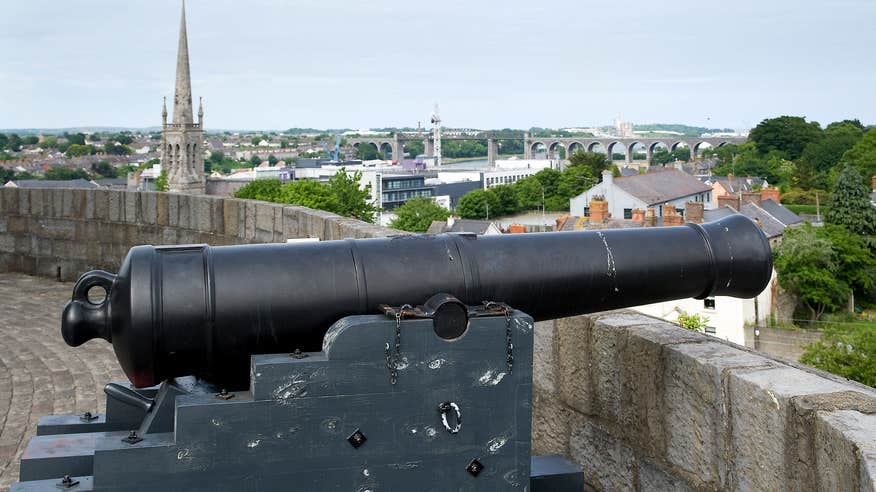
There are great views of Drogheda from the top of the tower, while in the courtyard there are artist studios in what were once military cottages, so you can pop in to pick up a hand painted silk scarf or knitted jumper. You can also book a medieval walking tour of Drogheda led by a museum guide, who’ll take you around town imparting their historical knowledge along the way. To arrange a tour, be sure to call the museum in advance of your visit.
A walk through Drogheda
When you’re ready to go, make your way over the Shop Street bridge and walk up to Highlanes Municipal Art Gallery, less than ten minutes from Millmount. Set inside the former Franciscan Friary Church, the gallery is a bit of a work of art itself, the exhibitions displayed between the original stained-glass windows and an elaborately carved high altar in the nave. Each exhibition runs for about two months and skews towards the contemporary – you might see pieces borrowed from the IMMA collection, or a large screen video installation.
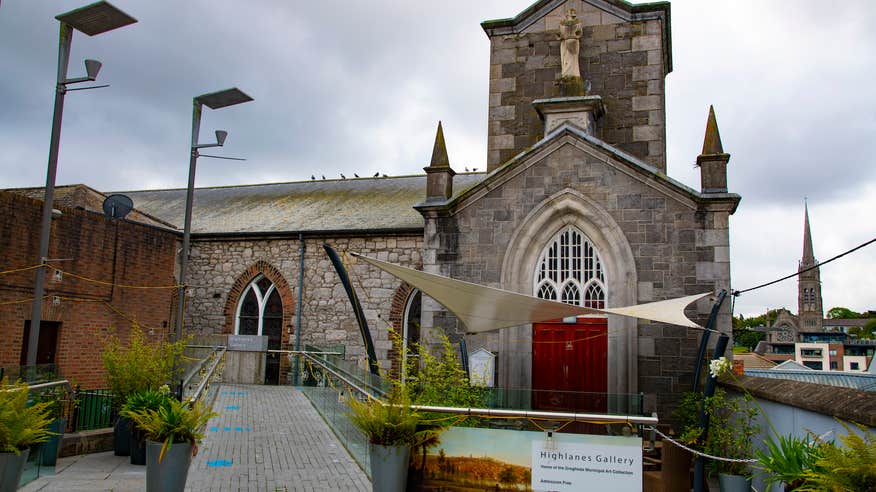
Just a couple of minutes from Highlanes Gallery is St Laurence's Gate, a remarkably intact 13th century tower which once led to the Friary of St Laurence. It’s off limits to cars, but you can walk right through the archway – it’s only when you stand underneath and look up that you appreciate just how thick the walls are.
Walk five minutes back down St Laurence and West Street and you’ll get to St Peter's Roman Catholic Church (not to be confused with St Peter’s Church, which is just around the corner). It’s the former you want, because inside you’ll find the National Shrine to Saint Oliver Plunkett, an elaborate golden spire that reaches all the way to the top of the ceiling (which is no mean feat in a church of this size). But the real point of interest is inside the shrine – peek and you’ll see the preserved head of Oliver Plunkett, which was thrown into a fire after he was hung, drawn and quartered in 1681. His friends retrieved his head from the flames and you can still see some scorch marks on his left cheek. Gruesome, yes, but a fascinating sight nonetheless.
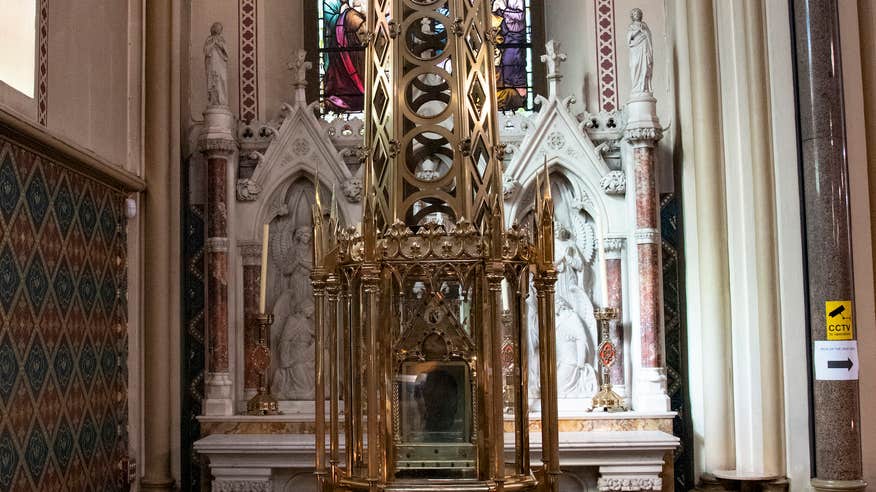
Go back in time at the Battle of the Boyne
The Local Link 163 bus travels from Drogheda to the Battle of Boyne Visitor Centre (20 minutes, three times daily), so hop on the lunchtime service to make your way there. The bus departs from both the stop opposite the Drogheda Bus Station or the train station. Bear in mind it’s a 17-seater bus and the service in the middle of the day can get busy, so it’s best to board at the train station, where the route originates, to ensure you get a seat. The good news is you can pay with a Leap card and the services are very punctual – in fact, some even depart a little early, so make sure you’re there about five to ten minutes ahead of schedule.
The drive to the visitor centre is lovely, past rolling green hills and right alongside the River Boyne at the final stretch. When you arrive, head into the main reception in Oldbridge House to buy a ticket for a self-guided tour. Much of the exhibition is within the grounds of this 18th century house, and there are guides at the entrance who are chatty and eager to answer any questions you may have. When you walk in, be sure to look over the front door at Oldbridge House – there’s a cannonball from the Battle of the Boyne embedded into the wall above the door frame.
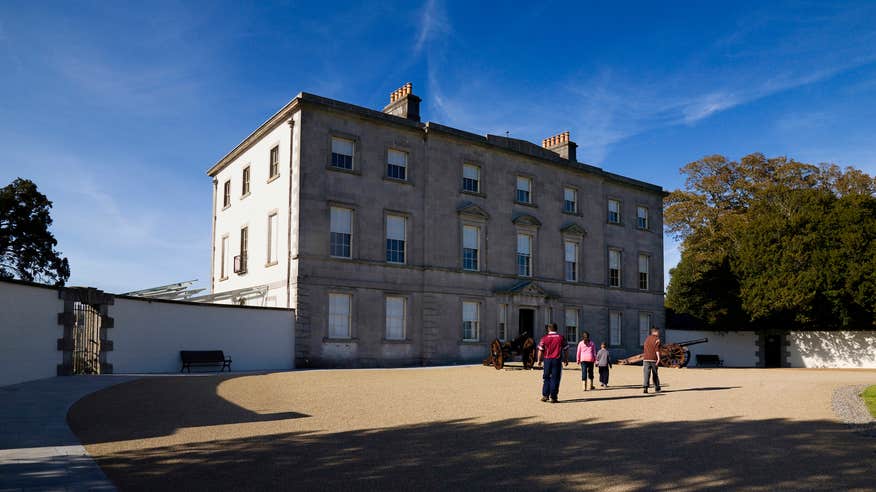
You'll learn about the story of the battle in the first room, where there’s a laser model of the battlefield that shows how the fighting played out with moving lights. It may look a little old school at first sight, but it’s a great way of visualising the battle just steps from where it all unfolded. You’ll see how King William III and King James II commanded their troops over the slopes just a few feet away and get a handle on how many soldiers fought on that day back in 1690 – there were 36,000 men on the Williamite side and 25,000 on the Jacobite side.
Move out into the courtyard and you’ll find a cinema room in the former stable, which shows a 15-minute movie that’s a more graphic depiction of the battle. It’s worth keeping an eye on their calendar of events, as they regularly hold historical re-enactments, too.
Re-enactments notwithstanding, the battleground today is peaceful and quiet. There are a few walking trails on the estate that lead you through the fields, but the Greenhills loop takes you up and over a grassy ridge for great views back to the house and over the battlefields, accompanied by birdsong and local dog walkers. Make a left after walking past the walled gardens and coffee hut and look for a purple post that’ll lead you to the ridge – from there, you can just follow any path you like back to the house.
Be sure to allow some time to explore the walled gardens before you leave – there’s an exhibition in the stone bothy that tells the story of the 18th century grounds and points you in the direction of the pleasingly symmetrical yew tree orchard and octagonal sunken gardens. It’s also where you’ll find the charming tea rooms, where you can sit with a cup of coffee and a big slab of homemade carrot cake.

Photo credit: @live.adventure.travel
Where to eat in Drogheda
If you need to start the day with a decent coffee, make a beeline for Ariosa. They roast all their own coffee beans and their tiny café in the middle of town is a great spot for a flat white and a sticky cinnamon bun.
If you’re around Highlanes Gallery at lunchtime, grab a bite at the on-site café Five Good Things. The exhibitions lead straight into the light-filled space, where greenery drapes down from the atrium ceiling. The menu is quite brunchy, with stuff like avocado toast and pancake stacks, or you can go for something heartier like a Korean fried chicken burger or croque madame, served with a pile of crispy home fries.
Things are a little more wholesome at Bare Food Company on West Street, with vegan scones, cacao porridge and plant-based burgers, but they also do an excellent breakfast bap and burrito bowls. The little courtyard seating area out the back is great on a sunny day.
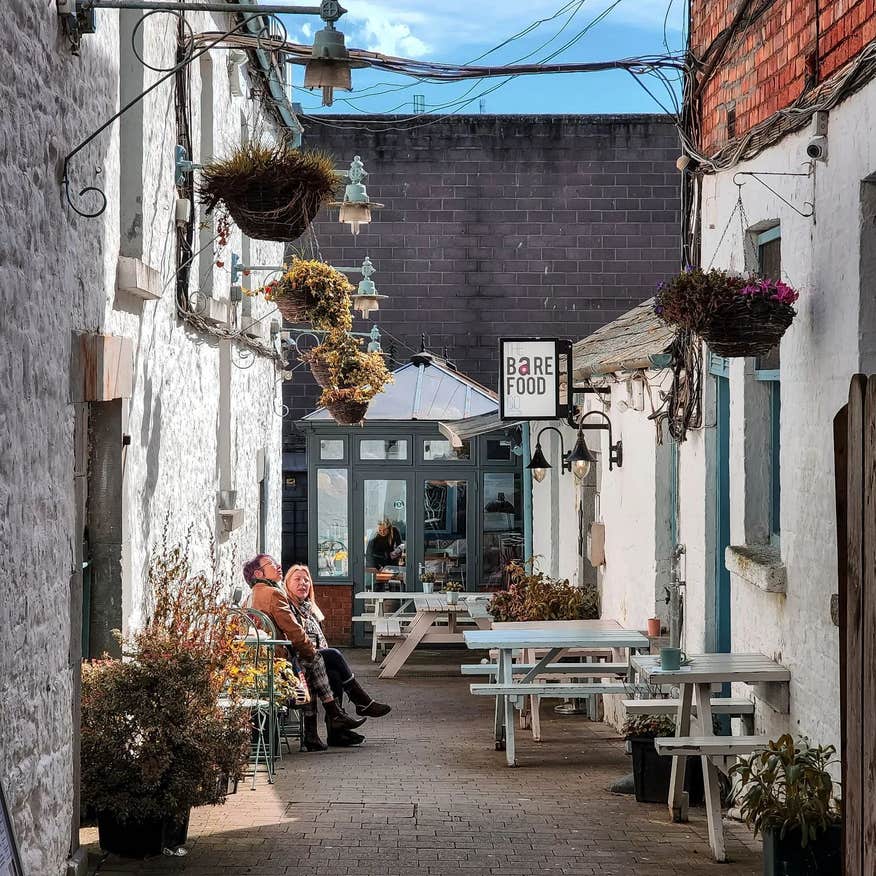
Photo credit: @wendell_2108
On West Street, Nelly’s has more of a party vibe, with an old-school pub aesthetic mixed with colourful armchairs and teal wood panelled walls. Their menu has a bit of an Asian theme, so order some pakora pops for the table before you tuck into a butter chicken curry or teriyaki salmon. For something more formal, walk up to Scholars Townhouse, where dishes like Skeaghanore duck and carrot gnocchi are served in a historic dining room with wood panelled walls and an intricately painted mural ceiling. They do a mean Sunday roast, too.
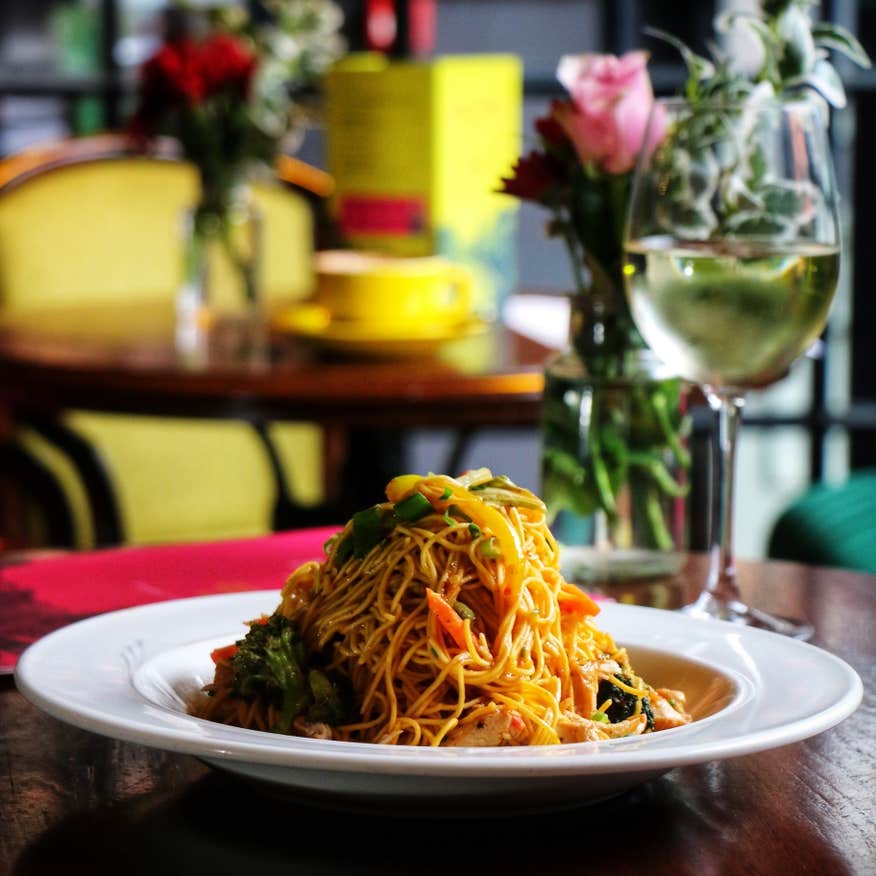
Photo credit: @nellysdrogheda
Forget the car and plan a day of great food and unique history in Slane.
